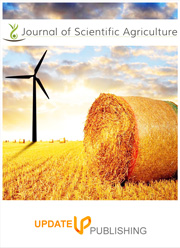Effect of Method and Time of Management on European Buckthorn (Rhamnus cathartica L.) Growth and Development in Minnesota
DOI:
https://doi.org/10.25081/jsa.2020.v4.6457Keywords:
European buckthorn, invasive, control method, species diversity, species richness, total nonstructural carbohydrates.Abstract
European buckthorn is an exotic problematic invasive woody species that has displaced native plant species in Minnesota woodlands. Buckthorn is also an overwintering host for oat crown rust and soybean aphids, which can cause significant crop yield losses. The overall goal of this study was to test multiple buckthorn control methods and examine the establishment of native plant species in colonized areas. Specific objectives were to 1) determine the effectiveness of buckthorn control methods when applied in different seasons, 2) monitor seedling recruitment and resprouting ability of buckthorn saplings following treatment, 3) monitor recruitment and survival of native plant species following treatment, and 4) characterize buckthorn carbohydrate fluctuations and considerations for timely and effective buckthorn management. Field experiments conducted for two years in two locations (Eagle Lake Regional Park and Battle Creek Regional Park, Minnesota, U.S.A), tested four buckthorn control treatments: 1) cutting only; 2) cutting+stump treatment with herbicide (triclopyr); 3) cutting+stump treatment with herbicide+burning, and 4) cutting+burning. Untreated controls were included in each experiment. Across management seasons, the cutting+stump treatment with herbicide resulted in higher seedling densities for buckthorn and other species the next season compared to cutting only without herbicide application. Spring management resulted in the lowest seedling density the next season for both buckthorn and other plant species, and spring control treatments that included herbicide and burning resulted in higher buckthorn and native species seedling densities than treatments without burning. Because seasonal total nonstructural carbohydrate levels in buckthorn crowns were highest in the fall season, we recommend applying systemic herbicides in the fall when carbohydrates are translocated for storage to facilitate herbicide translocation and efficacy. Our study shows that integrating multiple buckthorn control methods reduces buckthorn populations and increases native species diversity. For long-term control of buckthorn seedling establishment, follow-up treatments like applying foliar herbicide sprays can be used in addition to prescribed burning.



 .
.